Sidney Poitier wasn’t just an actor; he was a cultural icon who broke barriers and redefined what was possible for Black performers in Hollywood. Through his dignified presence, immense talent, and careful selection of roles, Poitier became the first Black man to win the Academy Award for Best Actor and paved the way for generations of performers who followed. As we look back on his remarkable career, these fourteen performances stand as testaments to his brilliance, courage, and enduring legacy that continues to resonate with audiences today.
1. Blackboard Jungle (1955)
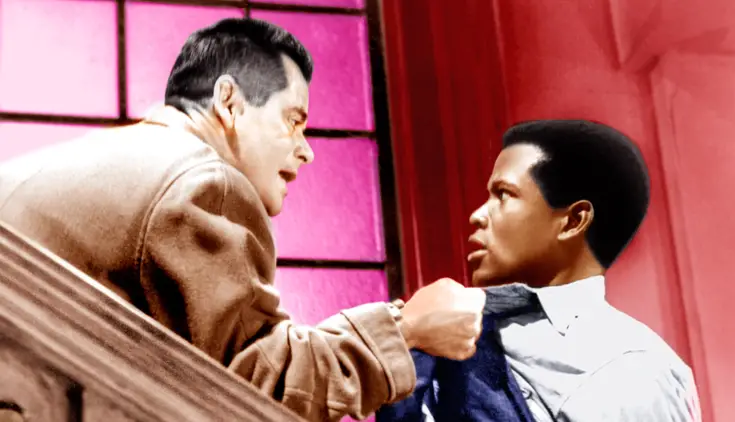
As rebellious high school student Gregory Miller, Poitier brought a complex humanity to a role that could have easily fallen into stereotype territory. His performance vibrated with quiet intelligence and simmering tension, establishing him as a formidable presence who could command the screen even among veteran actors. This breakthrough role showcased his ability to convey deep emotional currents beneath a composed exterior, a trademark that would define his acting style. Turner Classic Movies dives into what makes the setup to this film so equally classic, yet enduringly unique,.
His chemistry with Glenn Ford created some of the film’s most compelling moments, capturing the delicate dance between conflict and mutual respect. Poitier’s portrayal helped audiences understand the challenges faced by students in troubled urban schools without reducing them to simplistic characterizations. The film’s exploration of juvenile delinquency struck a chord with audiences of the time and continues to resonate as a thoughtful examination of education and generational divides.
2. Edge of the City (1957)
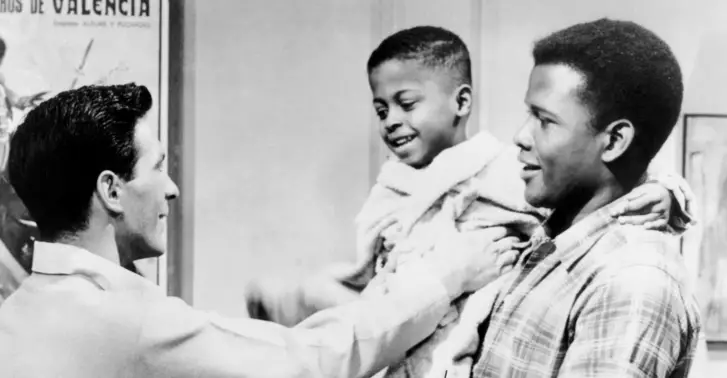
In this powerful drama about interracial friendship on the New York waterfront, Poitier’s performance as Tommy Tyler showcased his extraordinary ability to project warmth and integrity. His character’s genuine friendship with John Cassavetes’ Axel North challenged racial attitudes of the time while never feeling like a heavy-handed message film. The authenticity of their connection on screen helped make this film a quiet but significant entry in the fight against prejudice in American cinema. Film Comment Magazine explores the human element at play, driving so many of this film’s emotional scenes.
Tommy’s tragic fate in the film hit audiences hard precisely because Poitier had made him so vibrantly alive and decent. His performance earned critical acclaim and further established him as an actor who could bring depth and nuance to roles that expanded the limited opportunities typically offered to Black actors of the era. The film’s straightforward depiction of workplace racism and violence was unusually direct for its time, making it a landmark in honest portrayals of American race relations.
3. The Defiant Ones (1958)
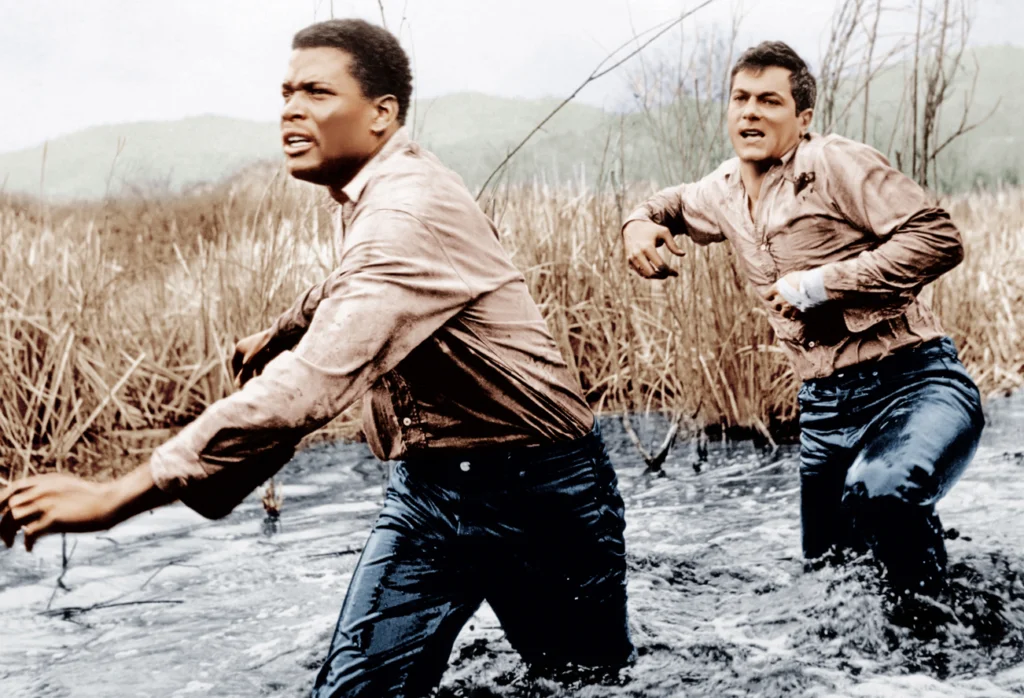
Chained to Tony Curtis’s escaped convict, Poitier’s portrayal of Noah Cullen in this Stanley Kramer drama earned him his first Academy Award nomination. The physical and emotional demands of the role revealed Poitier’s tremendous range as he conveyed Cullen’s initial hatred, growing understanding, and eventual sacrifice. Their literal chain became a powerful metaphor for the bonds of humanity that transcended the racial divisions of 1950s America. SlashFilm considers this particular film a notably decisive moment in Poiitier’s career, and it’s a testament to said career how this would just be one of many remarkable works to his name.
Poitier and Curtis developed a genuine friendship during filming that translated into a palpable chemistry on screen. The film’s unflinching look at prejudice was revolutionary for its time, challenging audiences to confront their own biases through the evolving relationship between these two characters. Poitier’s performance was particularly lauded for avoiding sentimentality while still accessing deep wells of emotion, setting a new standard for authentic portrayals in Hollywood.
4. Porgy and Bess (1959)
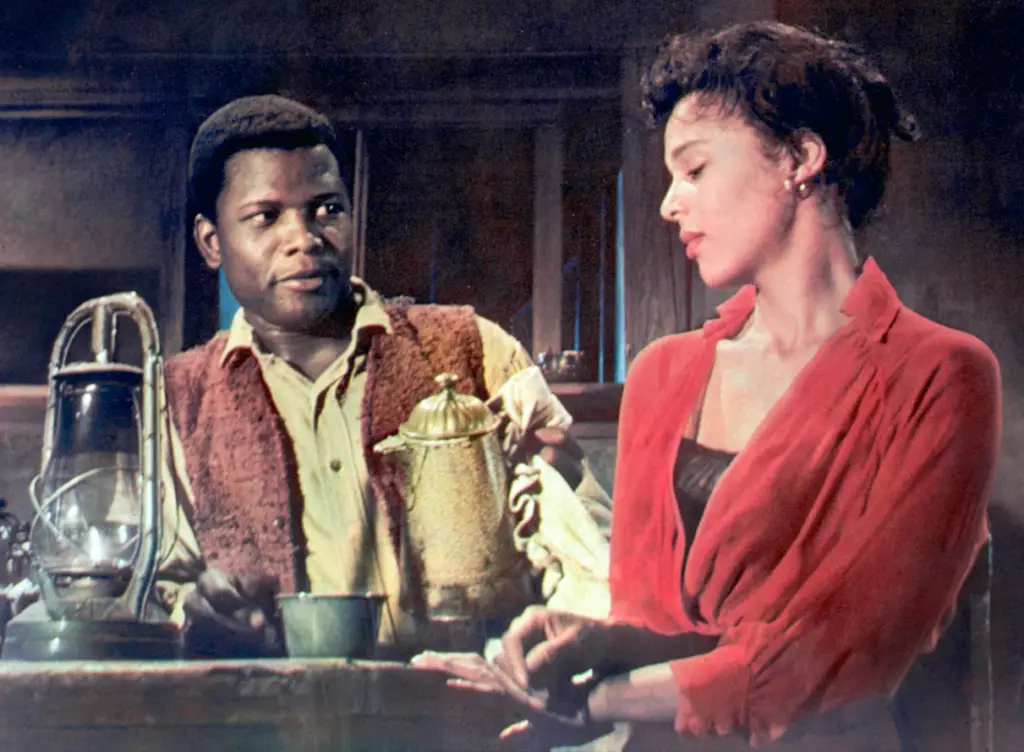
Though Poitier was initially reluctant to take on this role for fear of reinforcing stereotypes, his portrayal of Porgy brought dignity and emotional depth to the character. His remarkable physical transformation to play the disabled beggar demonstrated his commitment to fully inhabiting his characters rather than merely playing versions of himself. Despite his personal reservations about the production, Poitier’s performance elevated the material with his characteristic integrity and emotional truth.
Working alongside Dorothy Dandridge and Sammy Davis Jr., Poitier was part of an extraordinary assembly of Black talent rarely seen in mainstream Hollywood productions of the era. The film’s troubled production history and subsequent limited availability have made it something of a lost classic, though Poitier’s performance remains a highlight for those fortunate enough to have seen it. His internal conflict about participating in this adaptation reflects the complicated choices Black performers of his generation had to navigate in an industry with limited opportunities.
5. A Raisin in the Sun (1961)
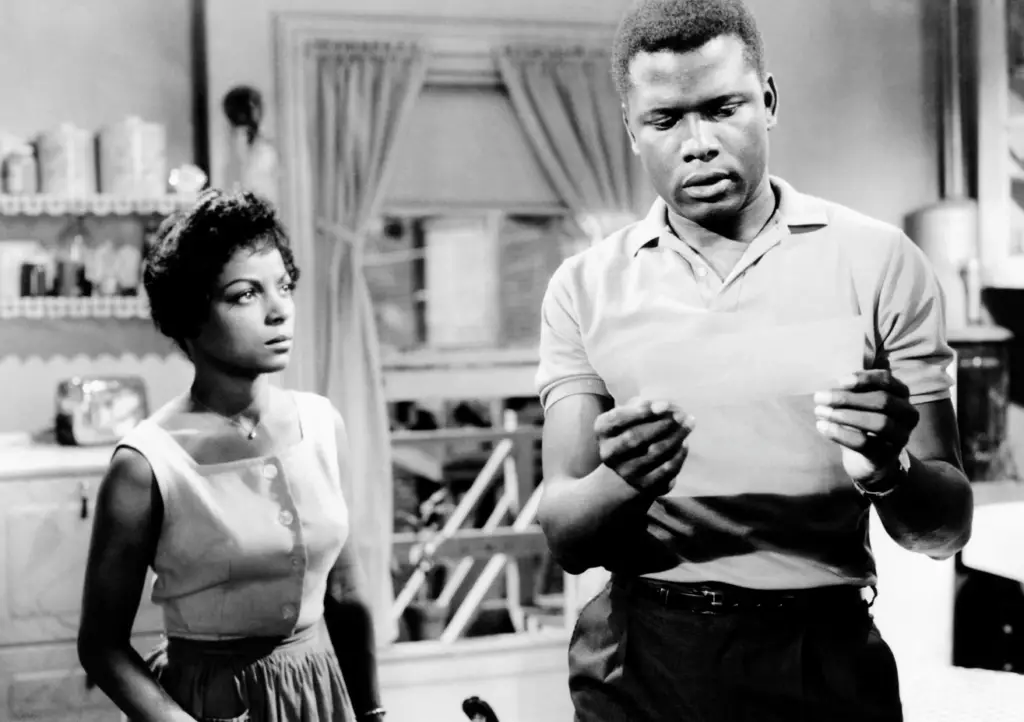
Reprising his Broadway role as Walter Lee Younger, Poitier brought Lorraine Hansberry’s landmark play to the screen with uncompromising power and vulnerability. His portrayal of a man fighting against economic limitations and crushed dreams captured the frustration and determination of Black Americans facing systemic barriers to advancement. Poitier’s performance found the universal in the specific, allowing audiences of all backgrounds to connect with Walter’s struggles while never diluting the distinctly African American experience at the story’s core.
The famous “money speech” scene showcases Poitier at his most raw and exposed, a departure from the more controlled dignity that characterized many of his roles. Working with much of the original Broadway cast created a sense of ensemble authenticity that made the family dynamics especially convincing and emotionally affecting. This film adaptation preserved one of American theater’s most important works and Poitier’s central performance remains a master class in bringing theatrical intensity to the screen without overplaying for the camera.
6. Lilies of the Field (1963)
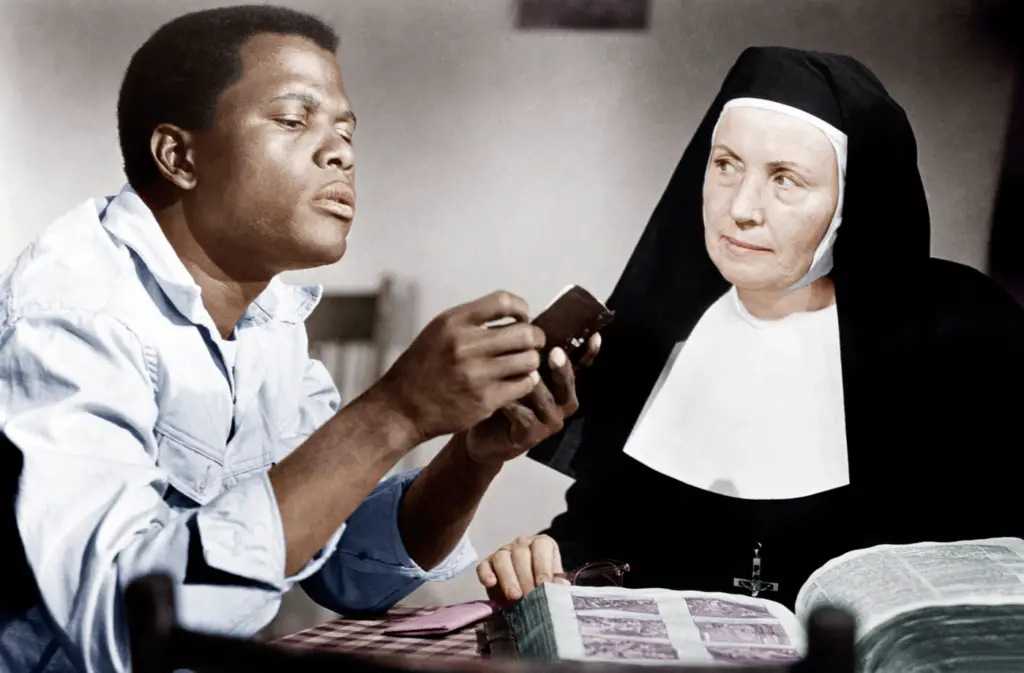
This gentle, uplifting film earned Poitier his historic Oscar for Best Actor, the first ever awarded to a Black man in a competitive category. As itinerant handyman Homer Smith, who stops to help a group of nuns build a chapel, Poitier created a character of immense charm, playfulness, and quiet spiritual depth. His performance was a perfect balance of humor and humanity, making Smith’s growing investment in the project and its community feel both believable and deeply satisfying.
The famous scene where he teaches the nuns to sing “Amen” showcases his musical talents and infectious joy, creating one of cinema’s most warmly remembered moments. Poitier’s chemistry with Lilia Skala, who played the determined Mother Superior, created a relationship rich with cultural and personality contrasts that never descended into caricature. His Oscar win represented not just recognition of an exceptional performance but a long-overdue acknowledgment of Black excellence in an industry that had systematically marginalized Black talent.
7. In the Heat of the Night (1967)

As Detective Virgil Tibbs, forced to work on a murder case in a hostile Southern town, Poitier delivered one of cinema’s most iconic moments with the line “They call me Mister Tibbs!” The restrained fury and wounded dignity of that declaration encapsulated centuries of disrespect and a refusal to accept it any longer. His performance was a masterclass in controlled intensity, showing a Black professional navigating a hostile environment with expertise, courage, and uncompromising self-respect.
Poitier’s chemistry with Rod Steiger created a nuanced exploration of how prejudice can begin to erode through professional respect and shared purpose. The scene where Tibbs visits the plantation and receives a slap from the owner—which he immediately returns—was shocking to 1967 audiences and represented a new kind of Black character who would not passively accept humiliation. The film’s critical and commercial success, including winning Best Picture, demonstrated that American audiences were ready for more authentic depictions of race relations, with Poitier’s powerful performance serving as both mirror and catalyst for changing attitudes.
8. To Sir, with Love (1967)
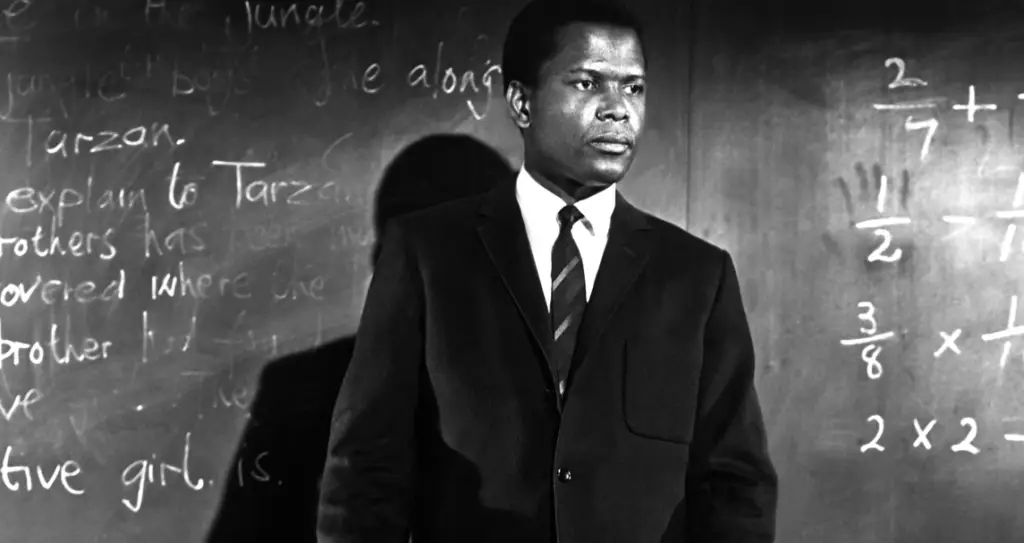
As Mark Thackeray, an engineer temporarily teaching in a tough London school, Poitier brought warmth and innovation to what could have been a conventional inspirational teacher story. His approach to the challenging students—treating them as young adults rather than children—resonated with audiences who were witnessing generational divides in their own communities. The scene where he tears up their textbooks to focus on real-life education captured both his character’s frustration and his determination to find a meaningful way to connect with his students.
His rendition of the title song became an unexpected popular hit, showcasing yet another dimension of Poitier’s talents. Despite criticism from some quarters about the idealized nature of the story, Poitier’s performance grounded the film with authentic emotional stakes and cultural observations about class divisions in British society. The film’s enormous popularity, particularly with young audiences, demonstrated Poitier’s cross-generational appeal and cemented his status as a global star whose charisma transcended national boundaries.
9. Guess Who’s Coming to Dinner (1967)
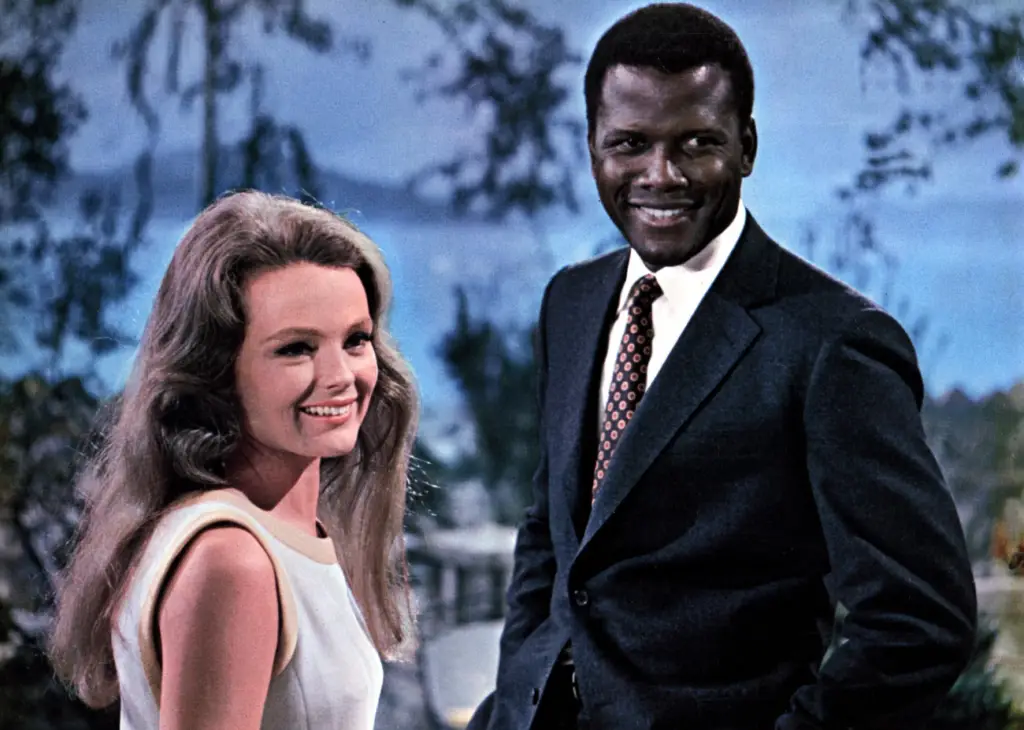
As Dr. John Prentice, a brilliant physician seeking approval to marry a white woman from her supposedly liberal parents, Poitier embodied a character specifically written to be so exceptional that objections could only be based on race. His dignified performance highlighted the absurdity of prejudice while navigating the complex emotions of a man meeting resistant potential in-laws. The film’s exploration of the gap between theoretical acceptance of equality and personal comfort with integration resonated with audiences navigating similar tensions in their own lives.
Released the same year as the Supreme Court’s Loving v. Virginia decision, which struck down laws against interracial marriage, the film captured a pivotal moment in American history with Poitier at its center. His final monologue to his own father remains one of cinema’s most powerful examinations of generational differences in approaching racism and personal happiness. Working alongside screen legends Spencer Tracy and Katharine Hepburn in Tracy’s final film, Poitier held his own with characteristic grace while tackling subject matter that remained controversial even as attitudes were rapidly changing.
10. For Love of Ivy (1968)
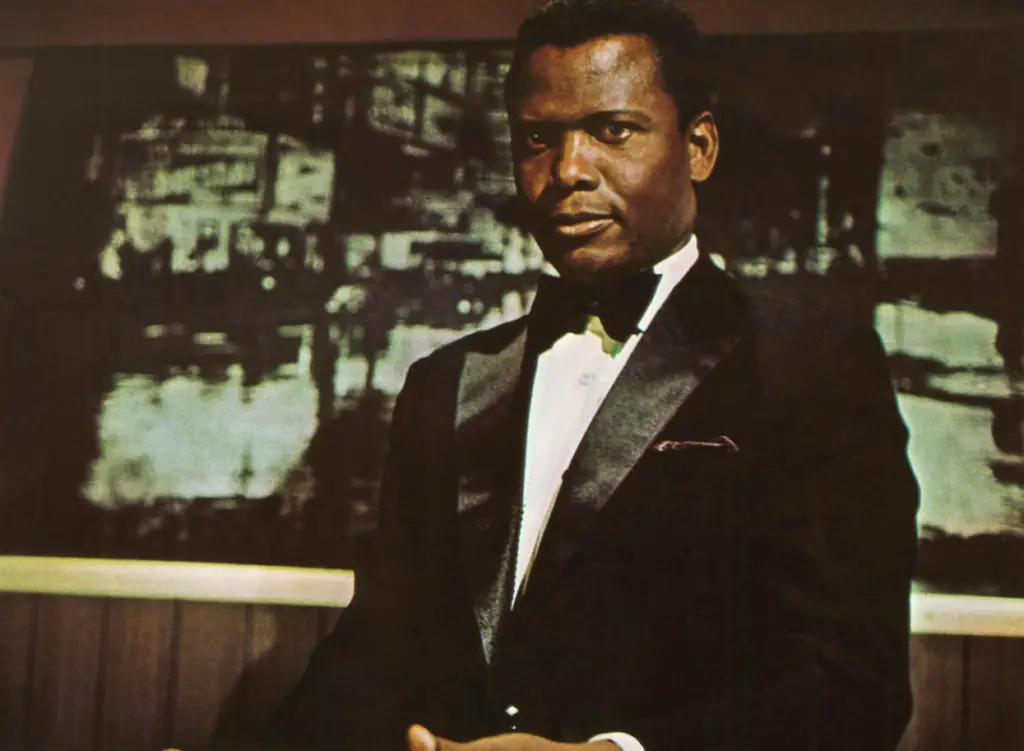
In this romantic comedy, Poitier played businessman Jack Parks, a departure from the more serious roles that had defined much of his career. His chemistry with Abbey Lincoln created one of the rare mainstream Hollywood romances centered on Black characters during this era. The film’s focus on the relationship rather than racial issues marked a step toward more diverse storytelling about Black lives beyond the context of struggle.
Poitier’s involvement extended beyond acting, as he developed the original story himself to create the kind of multidimensional role rarely offered to Black performers. His charismatic performance showed his capability with lighter material while still maintaining the intelligence and dignity that were hallmarks of his screen persona. The film’s success helped demonstrate to skeptical studio executives that audiences would embrace Black romantic leads, though Hollywood would take decades to fully embrace this lesson.
11. Buck and the Preacher (1972)
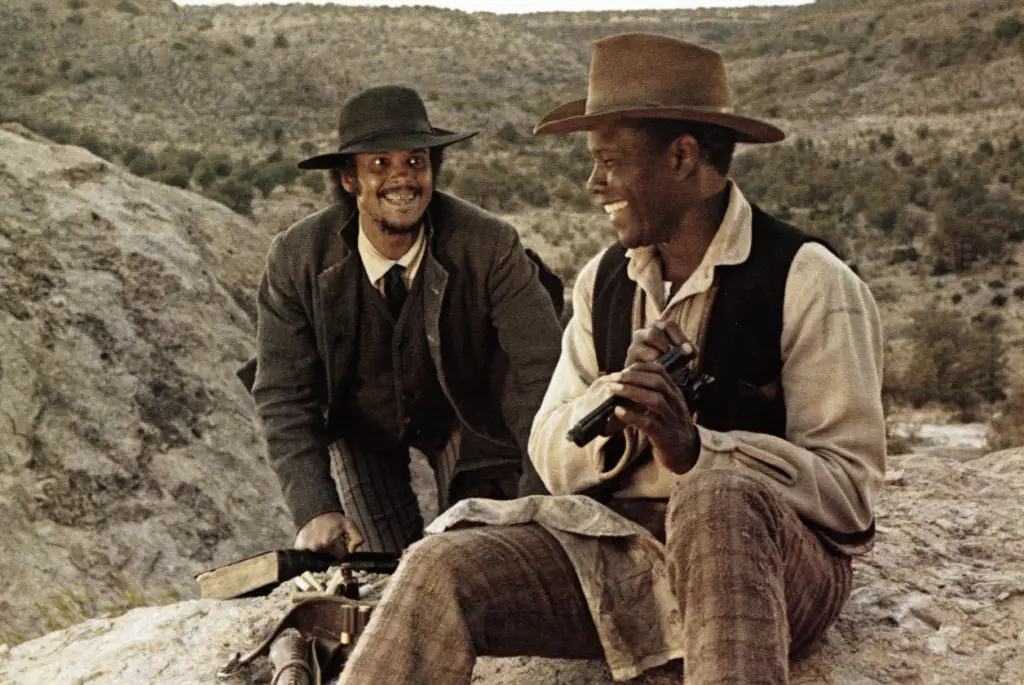
Making his directorial debut while also starring, Poitier broke new ground with this Western that centered Black characters in the post-Civil War frontier experience. His portrayal of wagon master Buck showed both physical toughness and strategic intelligence as he protected formerly enslaved people seeking a new life in the West. Working alongside Harry Belafonte, Poitier created a dynamic that subverted traditional Western tropes while honoring the genre’s emphasis on self-determination and justice.
The film’s focus on the often-overlooked Black experience in settling the American West filled a significant gap in cinematic history. Poitier’s direction emphasized authenticity in depicting the period while creating exciting action sequences that satisfied audience expectations for the genre. His multifaceted contribution to this production demonstrated his growing interest in having greater creative control over storytelling, a direction that would define the next phase of his remarkable career.
12. Uptown Saturday Night (1974)
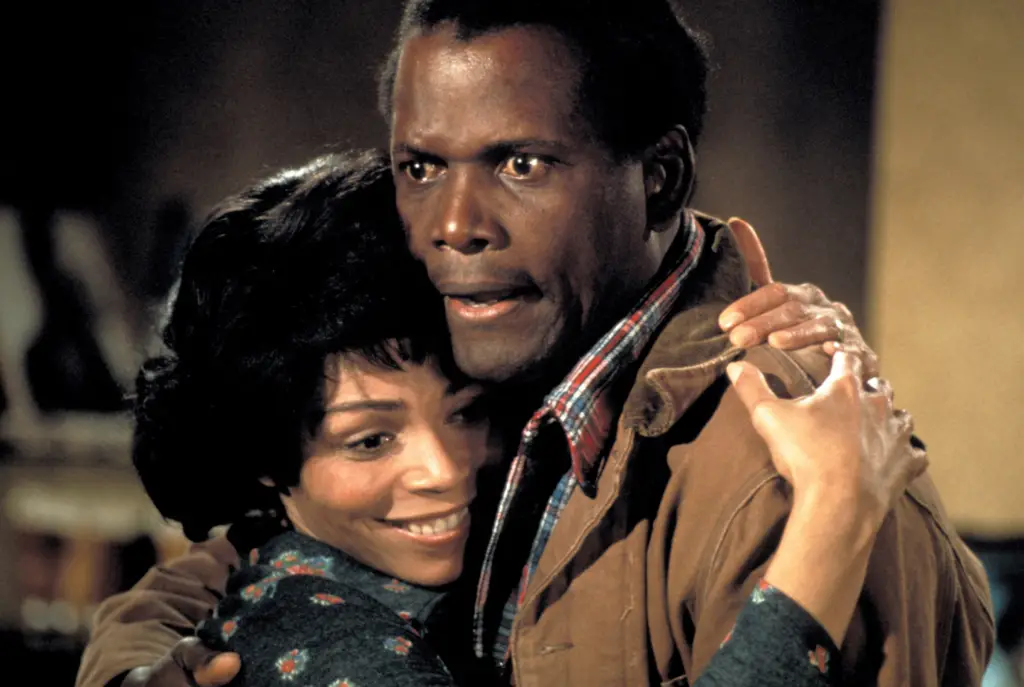
In this comedy caper film, Poitier played Steve Jackson, showcasing his often-overlooked comedic talents alongside Bill Cosby’s Wardell Franklin. Their misadventures trying to recover a winning lottery ticket brought a new dimension to Poitier’s screen persona, allowing him to be more relaxed and playful than many of his earlier, more dignified roles. The film’s success with both Black and white audiences helped establish that Black-led comedies could find mainstream commercial success.
Poitier directed this film himself, demonstrating his growing skill behind the camera. The stellar supporting cast of Black talent, including Harry Belafonte, Flip Wilson, and Richard Pryor, created a showcase for the range of Black comedic performance rarely seen in Hollywood productions of the time. This film and its sequels represented Poitier’s commitment to creating entertainment that portrayed Black joy and humor rather than focusing exclusively on struggle and oppression.
13. Shoot to Kill (1988)
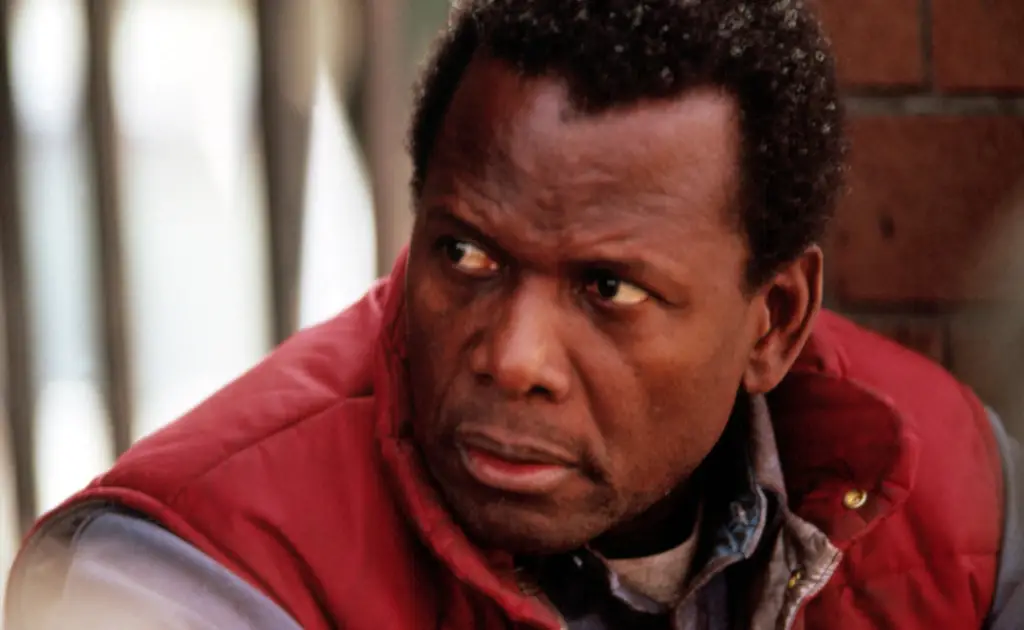
After a decade-long acting hiatus, Poitier returned to the screen as FBI agent Warren Stantin, proving that his charisma and intensity remained undiminished with age. His pursuit of a killer through the Pacific Northwest wilderness paired him with Tom Berenger’s tracker character, creating a compelling odd-couple dynamic. This action thriller allowed Poitier to reach a new generation of moviegoers who may not have been familiar with his groundbreaking earlier work.
At 61, Poitier performed many of his own stunts, demonstrating remarkable physical capability and commitment to authenticity. His portrayal balanced world-weary experience with determined professionalism, creating a character that felt both fresh and consistent with the dignified intelligence that had always characterized his performances. The film’s commercial success proved that audiences still hungered for Poitier’s distinctive presence, even in a Hollywood landscape that had changed dramatically during his absence from acting.
14. Sneakers (1992)
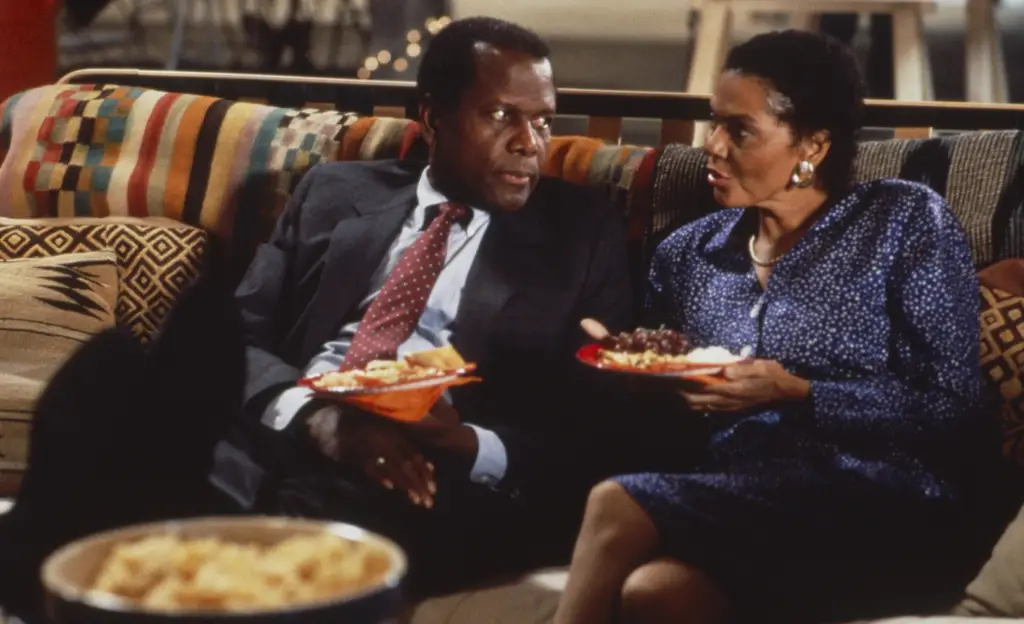
In this ensemble techno-thriller, Poitier played former CIA officer Donald Crease with his characteristic gravitas and intelligence. Working alongside Robert Redford, Dan Aykroyd, and River Phoenix, he demonstrated his ability to integrate seamlessly into an ensemble while still making his character distinctly memorable. His delivery of the line “I’m too old for this” became an audience favorite, delivered with perfect comic timing that acknowledged his senior statesman status while proving he could still keep pace with performers decades younger.
The film’s exploration of technology, security, and privacy feels remarkably prescient three decades later. Poitier’s character brought moral clarity to the team’s ethical dilemmas, reflecting his career-long association with characters who maintained strong principles even in morally ambiguous situations. This role would be among his last major film appearances, providing a fitting capstone to a career that had transformed Hollywood and American culture.
Sidney Poitier’s career represented not just artistic achievement but cultural transformation, as he helped reshape American perceptions about race through characters of uncompromising dignity, intelligence and humanity. His careful selection of roles—often turning down lucrative opportunities that didn’t meet his standards—created a body of work that stands as both entertainment and social document of a changing nation. While younger generations may know him more by reputation than direct experience with his films, his influence continues through every performer who benefits from the doors he opened and the standards he set for excellence without compromise.


